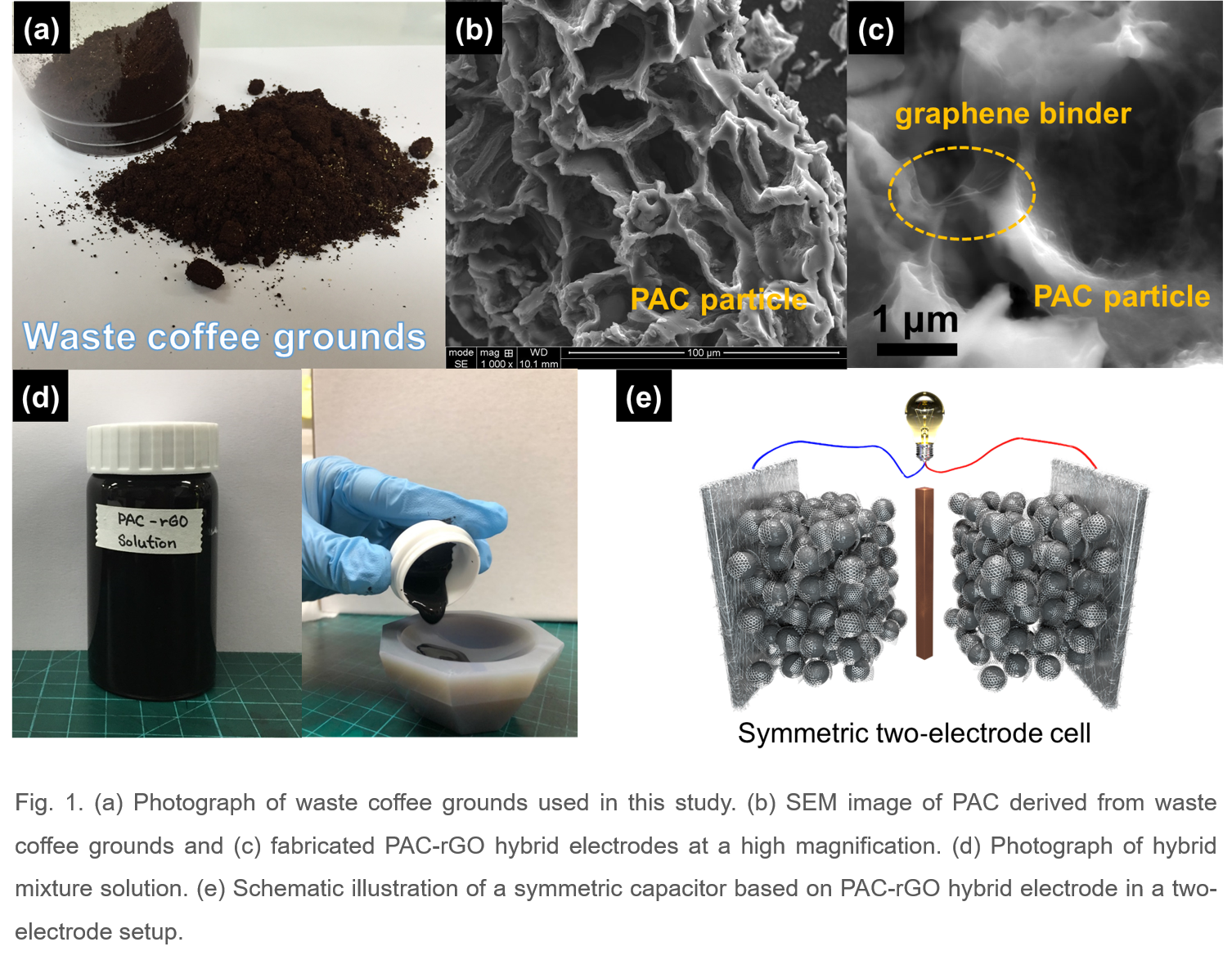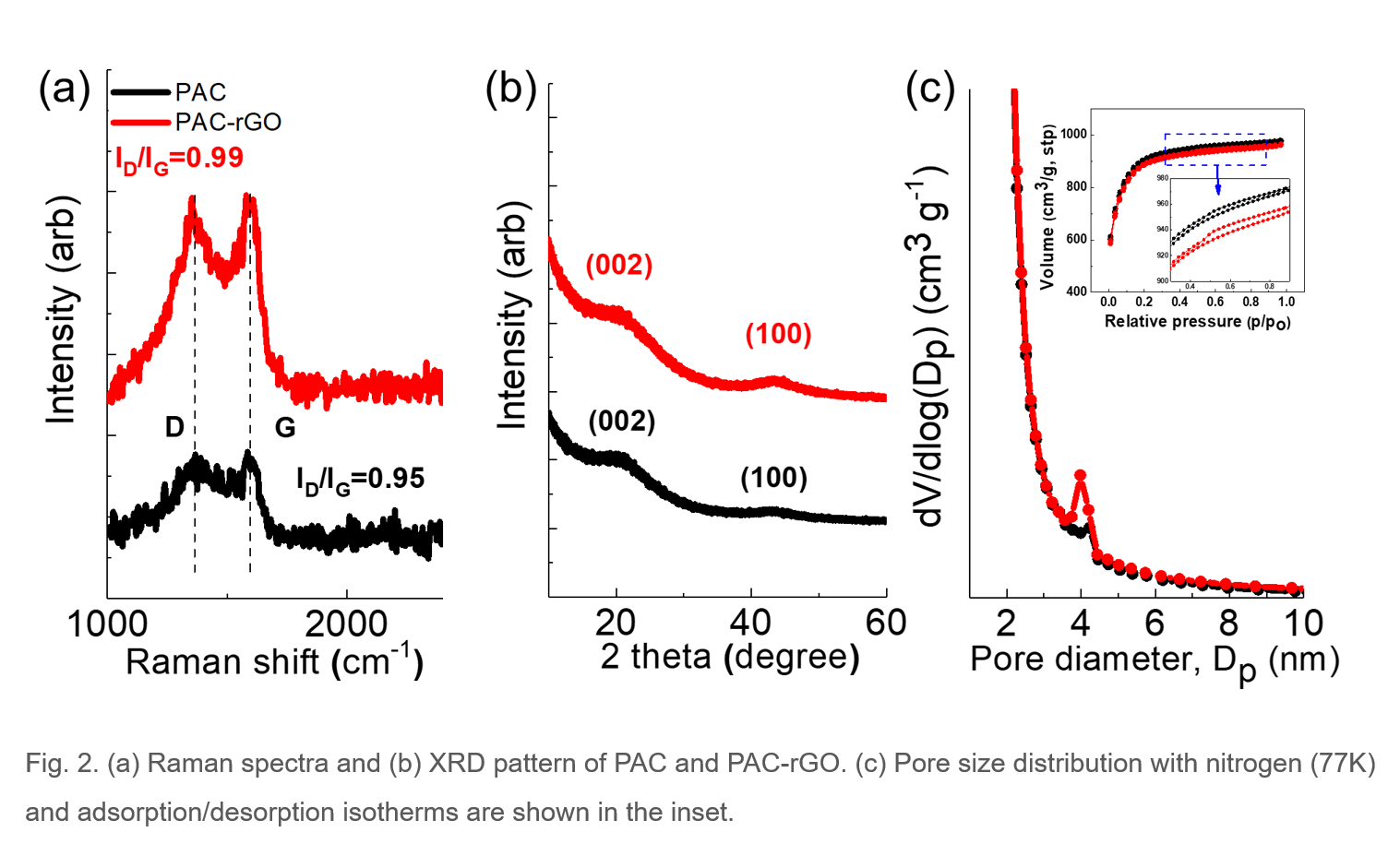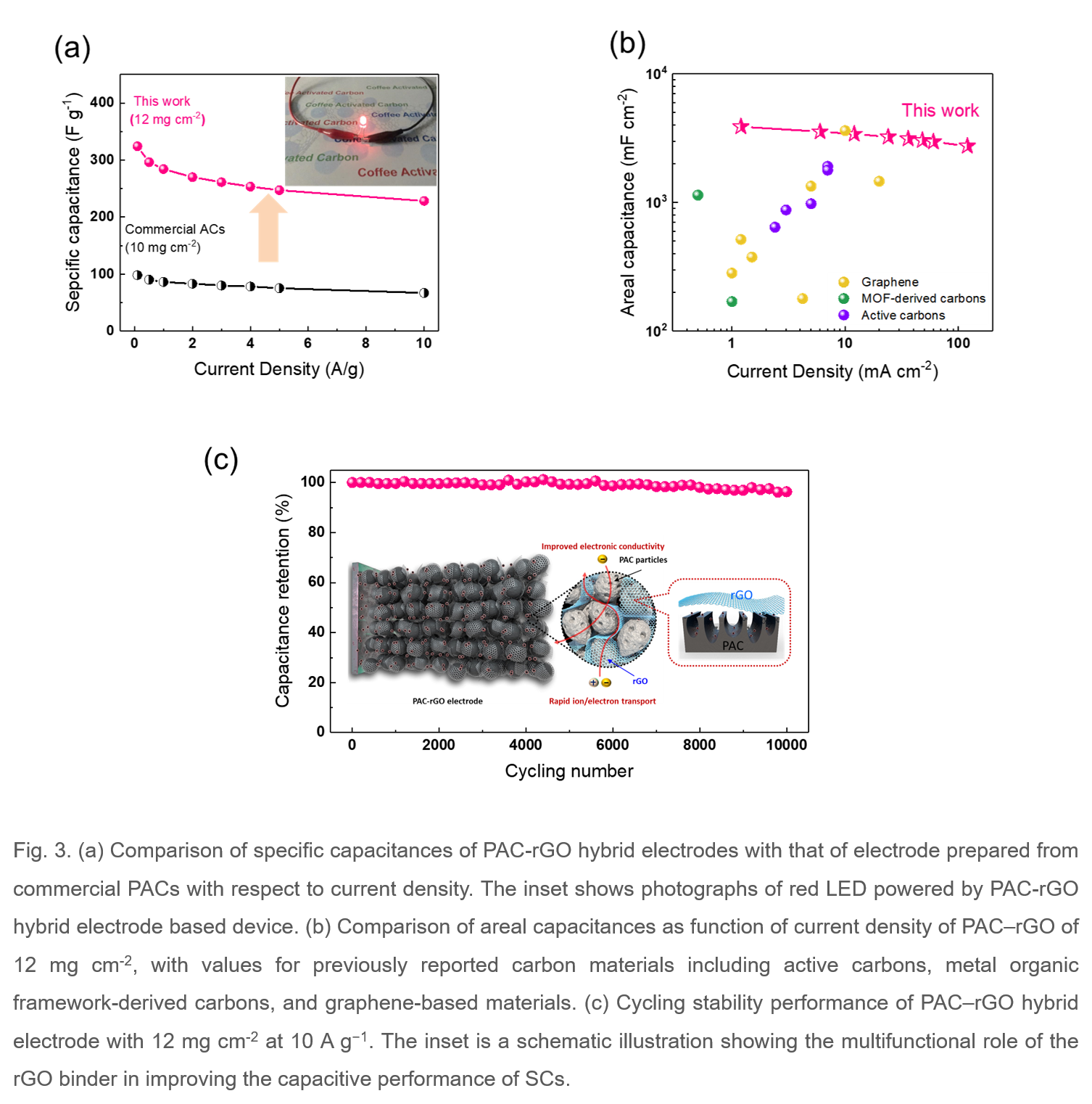
In order to meet the growing energy demands of modern society while simultaneously reducing global warming, the development of advanced energy generation and storage systems that are sustainable and have high efficiency should be a priority. Supercapacitors (SCs), due to their excellent power density and long cycle life, have been considered attractive energy storage systems for emerging technologies like wearable electronic devices and hybrid electric vehicles. Among potential electrode materials for SCs, porous activated carbons (PACs) derived from renewable bio-waste appear as promising candidates due to their low cost and environmentally-friendly nature, as well as their unique surface properties that result from functional groups containing heteroatoms. In this study, a graphene binder incorporated into PAC-based electrodes markedly boosted the capacitive performance of SCs by forming a three-dimensional interconnected network that led to fast ion diffusion with easy accessibility as well as larger accessible surface areas of active materials across the entire electrode. The resultant electrode exhibited outstanding specific and areal capacitances as well as excellent rate capability and cycling performance, even with high mass loading of 12 mg cm−2, demonstrating its strong potential for use in high-performance SCs.
Contact: Ji-Hyuk Choi (blt_27@kigam.re.kr)


